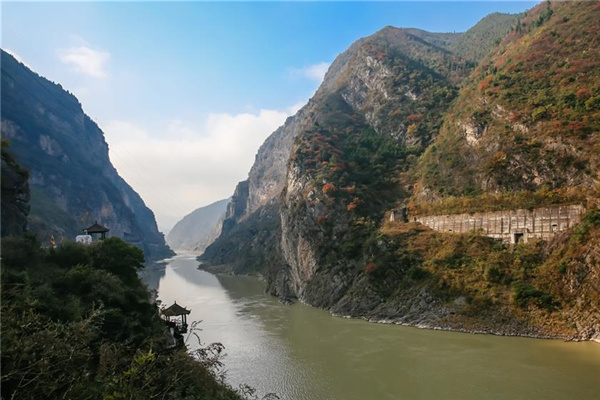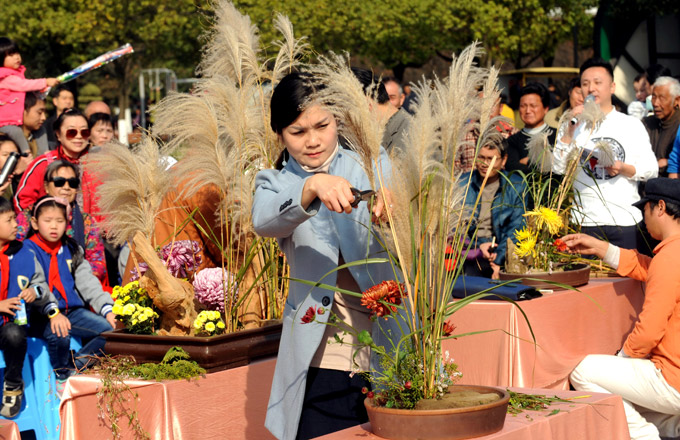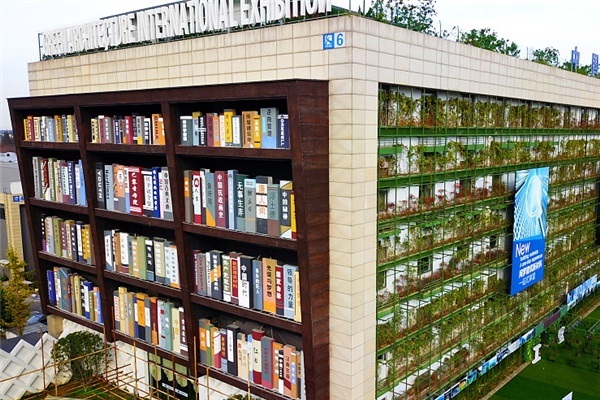

|
A farmer collects sand willow in Erdos in Inner Mongolia autonomous region. Zhang Qi |
The livelihood of Wulan Dalai was long defined by herding sheep, as it had been in Inner Mongolia for his father and grandfather, a tradition stretching back hundreds or even thousands of years.
But in 2008 he met Shanxi businessman Li Jinglu, who totally changed Wulan's daily work and doubled his earnings.
Li, a real estate developer, is operating a showcase willow tree-fueled power plant to help control desertification in Inner Mongolia - and boost the income of farmers and herdsmen by paying them to cultivate a variety known as the sand willow.
The power plant in Erdos, projected to use 200,000 tons of sand willow annually, has been in commercial operation since February. The facility is designed to generate 30 mW of electricity annually and eliminate an estimated 260,000 tons of CO2 emissions yearly that would have been released if the same power was generated by burning coal.
Li pays local farmers or herdsmen like Wulan 45 yuan per hectare of desert each year, and 1,500 yuan a hectare to buy and plant saplings. He will pay 140 yuan a ton for willow branches after trees mature in eight years.
Wulan, who has 333 hectares of desert, will receive 15,000 yuan a year by simply leasing his sand dunes.
He can also make money through price differences in hiring others to plant sand willows. In eight years he will earn more by stumping the trees and collecting them for a yearly income of 100,000 yuan, 10 times his income last year.
"Now I can earn as much as 30,000 yuan thanks to the willow," he said. "But a year ago, I was grazing 100 sheep for 10,000 yuan a year and barely surviving."
There are about 5,000 farmers like Wulan leasing their land to Li, planting 22,000 hectares of willow trees for his power plant - an area almost as large as that encompassed by Beijing's third ring road.
Sand willows can also be used for timber. In Pojianghai village, tree plantations are expanding quickly over the vastness of the desert. With sawmills dotting the landscape nearby ready to process the trees, sand willows have become a major income source for many.
The arrangement fits Inner Mongolia's government policy to control desertification.
The region's 1.18 million square km of land consists of 94 percent desert and sand. Only 4 percent is suitable for human habitation
Strong winds from Inner Mongolia's 150,000-sq-km desert threaten Beijing with damaging sandstorms.
In the early 1990s, the local government called for planting of sand-friendly plants to control desertification.
"Inner Mongolia's government has encouraged farmers and herdsmen to grow sea buckthorn and sand willows and gives them subsidies," said Hu Qun, deputy director of the Inner Mongolia Forestry Administration.
Hu said the government has offered incentives including subsidies to local farmers who plant and provided preferential tax policies to encourage enterprises that can thrive on sand-related business.
The regional government invested about 40 billion yuan to plant sand-tolerant bushes over the past 10 years, according to Ren Yaping, executive vice chairman of Inner Mongolia Autonomous Region.
In 2005 the Erdos government built a 2.5 sq km processing center for sea buckthorn that will eventually require investment of 1 billion yuan by 2010.
Sea buckthorn berries, which have high levels of vitamin C and E and contain essential fatty acids, can be produced into juice, vinegar or other kinds of health food products.
Wu Yongqian from Xinminbao village in Erdos city has been planting sea buckthorn for five years. The 37-year-old now has more than 200 mu of the plant under cultivation from which he earns 10,000 yuan annually.
The government gave a planting subsidy of 180 yuan per hectare in 2007, which was raised to 210 yuan in 2008, Wu said.
But the local government before had to hire people to plant trees to hold back drifting sands and the trees seldom survived because they needed to be cut back every three years and farmers were reluctant to do so without pay.
Now the invisible hand of the market is changing Inner Mongolia's desert.
Seeing the profit in sand willows, local farmers are treating their trees like babies and have begun planting more.
After years of management, the expansion of Inner Mongolia's desert has slowed and the situation is much improved, Hu said.
"In the 1990s, in May - the sandstorm season - there were more than 10 sandstorms for the month, but since 2000 there have been only two or three sandstorms each season," Hu said.
Forest coverage is expected to increase to 20 percent by 2010 and 23 percent by 2020 compared to its current 17.6 percent, when Inner Mongolia will be a "natural protective screen" in north China, Hu said.
(China Daily 06/08/2009 page10)













